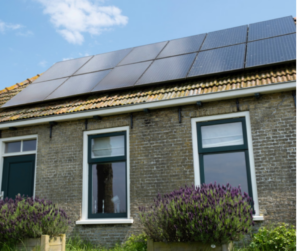
The Rise Of Renewables In The Home
The increase of renewable energy in residential houses has been one of the biggest changes in the UK in the last 10 years.
We have all seen the classic blue solar panels on rooves across the country. But you may have seen a slow rise in sleeker, better looking black solar panels and thought to yourself, what’s the difference between them? And-should I go for blue or black?

Your data is safe and secure
Find out in 30 seconds
The difference between black and blue solar panels is the way that they are made. All solar panels are made from silicon crystals as this is one of the best materials available for converting sunlight into energy for your home. Without going into too much of the nitty gritty details, black solar panels are more complicated to produce than blue ones. The differences in production essentially mean that a black solar panel is made up of lots of single crystal solar cells put together, and a blue panel is made up of lots of multi crystal solar cells put together.
Because light interacts differently with single crystal (or monocrystalline) cells than it does with multi crystal (or polycrystalline) cells, this is what makes black solar panels look black to the naked eye.
Theoretically this is true, in fact, black panels do absorb more light than blue ones. BUT, and it is a big but, solar panels get warmer as the day goes on. The more light they absorb the more heat they absorb too, and when solar panels get too warm they start to lose how effectively they convert sunlight into electricity, making them less efficient.

We have written some helpful guides, to answer some more questions you might have about the wonderful world of solar!

The increase of renewable energy in residential houses has been one of the biggest changes in the UK in the last 10 years.

Winter is here and it’s difficult to avoid wondering if solar panels can produce an effective amount of energy for your home in the cold

We’ve done some quick maths to give you an idea of how much energy you can expect to create.
© Honest Quotes 2025